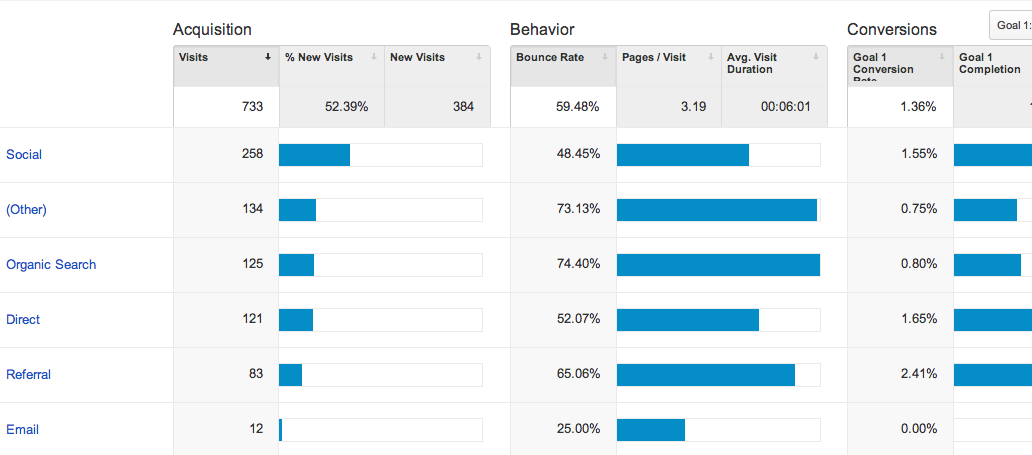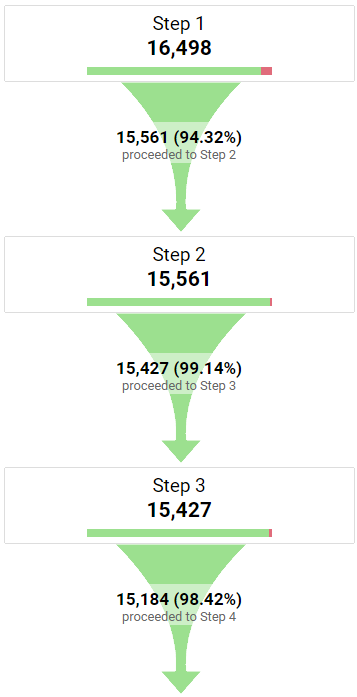Recognizing What Data Is Google Analytics Goals Unable to Track
Recognizing What Data Is Google Analytics Goals Unable to Track
Blog Article
Unveiling the Blind Spots: Recognizing What Google Analytics Goals Can not Measure
In the world of electronic analytics, Google Analytics stands as a powerful device for monitoring and evaluating on the internet individual communications. Nevertheless, in the middle of its durable capacities, there exist blind places that usually escape dimension. Recognizing what Google Analytics objectives can not measure is crucial for gaining a comprehensive view of user habits and engagement. As we explore the intricacies of these dead spots, we uncover a complex internet of uncharted territories that hold valuable understandings right into individual actions and motivations, challenging conventional knowledge and losing light on the limitations of our data-driven understanding.
User Actions on External Platforms
Understanding how customers engage on outside platforms is essential for maximizing on the internet techniques. Outside platforms, such as social media networks, recommendation sites, and online discussion forums, play a significant duty in driving web traffic to a firm's site. By assessing customer behavior on these platforms, organizations can get valuable understandings into the efficiency of their advertising and marketing efforts and the preferences of their target market.
One key aspect of customer behavior on external systems is the referral source. By tracking where the individuals are coming from, organizations can recognize which platforms are driving the most traffic to their website. This information can assist companies designate their resources better, concentrating on the platforms that produce the most effective outcomes.

Offline Conversions and Interactions
Assessing user habits on outside systems supplies important understandings right into on the internet strategies; nonetheless, thinking about offline conversions and interactions is just as important for a comprehensive understanding of a firm's general efficiency. Offline conversions, such as in-store purchases or phone questions, play a considerable role in several services' success.

Attribution Beyond Last Click
When delving into the world of electronic marketing analytics, it comes to be vital to look past the solitary touchpoint of the last click for an extra detailed understanding of acknowledgment. While Google Analytics look at this site provides valuable insights into customer actions, depending exclusively on last-click acknowledgment can be restricting - what data is google analytics goals unable to track. Acknowledgment models that go beyond the last click provide a more nuanced view of the client trip, taking right into account all the touchpoints that bring about a conversion
Acknowledgment past the last click permits online marketers to assign debt to numerous communications along the conversion path, providing a clearer image of the effectiveness of various advertising and marketing networks. By checking out multi-touch attribution designs such as straight, time degeneration, or position-based attribution, services can much better allocate their marketing budgets and optimize their methods for optimal effect.
Understanding the impact of each touchpoint in the conversion process is crucial for making educated choices and making best use of ROI. By accepting attribution past the last click, services can get deeper understandings into customer habits and tailor their advertising and marketing initiatives better.
Cross-Device and Cross-Browser Tracking

Similarly, cross-browser tracking matches cross-device tracking by catching user behavior as they change in between various internet internet browsers. Recognizing how users engage with internet sites on numerous browsers can help online marketers enhance their on-line experiences to ensure consistency and functionality across different platforms.
Qualitative Data and User Intent
Comprehending individual intent with qualitative data analysis is critical for creating targeted electronic advertising approaches that reverberate with the needs and preferences of the target audience. Qualitative data provides understandings right into the 'why' behind individual actions, dropping light on motivations, emotions, and choices that measurable information alone can not record. By assessing customer responses, comments, and interactions, marketing professionals can discover useful info regarding user intent, enabling them to customize their messaging, material, and offerings to better straighten with what their target market is seeking.
Qualitative data additionally assists in comprehending the context in which users involve with an internet site or application. This contextual understanding allows online marketers to produce more appropriate and customized experiences, inevitably driving greater engagement and conversion rates. By diving right into individual intent through qualitative information analysis, businesses can obtain a deeper look at here understanding of their target market, resulting in more efficient advertising strategies that satisfy users' expectations and demands.
Conclusion
Finally, Google Analytics goals have constraints in measuring customer behavior on external platforms, offline conversions, acknowledgment beyond last click, cross-browser and Full Article cross-device tracking, and qualitative information associated with individual intent. what data is google analytics goals unable to track. It is essential for organizations to be knowledgeable about these blind places in order to supplement their data analysis with various other tools and approaches to get a more detailed understanding of their target market and improve their general electronic advertising approaches
By examining individual habits on these systems, businesses can acquire beneficial understandings into the efficiency of their advertising and marketing efforts and the preferences of their target audience.
Assessing user behavior on outside platforms supplies beneficial insights into on the internet approaches; nonetheless, considering offline conversions and interactions is similarly vital for a detailed understanding of a firm's overall performance.In digital marketing analytics, moving beyond last-click attribution to explore cross-device and cross-browser tracking is necessary for gaining a holistic understanding of customer communications across different platforms and gadgets. By analyzing individual comments, comments, and interactions, marketers can reveal beneficial details regarding customer intent, permitting them to customize their messaging, material, and offerings to better align with what their target market is looking for.
By delving into user intent via qualitative information evaluation, organizations can get a much deeper understanding of their target audience, leading to much more effective marketing techniques that meet individuals' assumptions and requirements.
Report this page